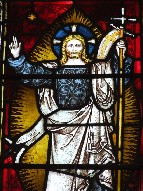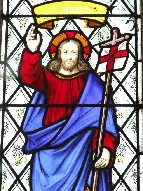| |
|
 |
|
I first came to Lidgate on a
beautiful, crisp February morning towards
the end of the last millennium. I was
near the start of a bike ride from
Newmarket to Ipswich. There was hardly a
cloud in the sky, and it felt like the
first proper springlike day of the year.
The birds thought so too. Although the
years have passed since that occasion, it
has remained strong in my memory. I
came back nine years later in May, on the
hottest day of the year so far. This time
I arrived from the south, and discovered
what I hadn't noticed before: the pretty
cottages of this otherwise lovely village
line a real ratrun of a road, which took
the pleasure out of the bike ride. I made
a mental note to myself to arrive from
the north next time I visited. Here, the border
with Cambridgeshire is delightful; gentle
woodland enfolds the little River Kennet,
and the villages are invariably lovely; Dalham and Moulton particularly so.
Given their proximity to Cambridge, the
houses must be worth a fortune.
|
On that bright
February day I soon found the road was climbing
up onto the agricultural plain. The low sun
striped the hedgeless lane ahead of me through a
comb of poplars, and the settlements became
preoccupied; working villages, at the heart of
their land. On this February morning, a skein of
mist still clung to the furrows, and rising among
them was something most un-East Anglian. A castle
mound, with houses and a church clambering around
it. This was Lidgate.
I
cycled off the main road, and into the village. A
wide pond spread at the foot of the lane to the
church, a few cars parked around it, their owners
stretching in the pale light. A young couple had
brought their infant son to feed the ducks. The
high, cloudless sky clamoured brilliantly in the
surface of the still water, and soon it will be
spring again, I thought, the whole cycle starting
over.
Although
the windows are Decorated, and it doesn't look as
though this was a prosperous place in the 15th
century, all is not what it seems, for the nave
walls are Norman, and may well have been the
castle chapel. The castle was probably one of
those raised by King Stephen against the revolt
of Geoffrey de Mandeville in 1143, later becoming
a manorial hall. Not much is left, now. The poet
John Lidgate may also have come from this
village; he was a monk at Bury Abbey.
The church sits up
on the hill beside the scant ruins of the castle,
and one can't help but be reminded of the same
juxtaposition on a grand scale at Durham and
Lincoln. The churchyard was trim, but the site
itself seems ancient and primitive. All is very
simple, very humble. A proper village church
this, which makes the Stations of the Cross and
the other evidence of the 19th century revival
all the more romantic.
Apart from the
nave walls and later porch, all is 13th and 14th
century. No clerestory was built here, making the
church seem rather square and gloomy inside.
Mortlock directed me to some extraordinary
grafitti, including 14th century fragments of
music, and the head of a Madonna. Impossible to
photograph, of course. Medieval
benches sit beneath the 19th century roof, and
the rood screen is also medieval; but the gate,
probably inspired by those at neighbouring Cowlinge, are not.
| The most
famous feature of this church is the
small brass to Thomas Atwelle, one of
only four in Suffolk that show a priest
wearing Eucharistic vestments. However,
it isn't something you can easily see, as
it is covered by the long blue carpet
which runs the length of the church. This
is unfortunate, because, as at Bawburgh in Norfolk, the
carpet draws the moisture from the stone
floor, which then collects in the
indentation of the brass, with the effect
of ruining both brass and carpet. The
carpet is railed down; I tried removing
one of the rails, but when I came to the
next one it would hardly budge. I thought
that, at a pinch, I could probably get it
out, but probably not put it back again,
so in the end I reluctantly decided to
leave it. I did lift the side of the
carpet to look at the poor little figure,
its latten oxidising into murky green. So much Catholic
imagery was destroyed by the 16th and
17th century reformers; so many brasses
were melted down by 18th century scrap
metal dealers. So little survives, and
everything is precious.
|
|
 |
|
|
|

